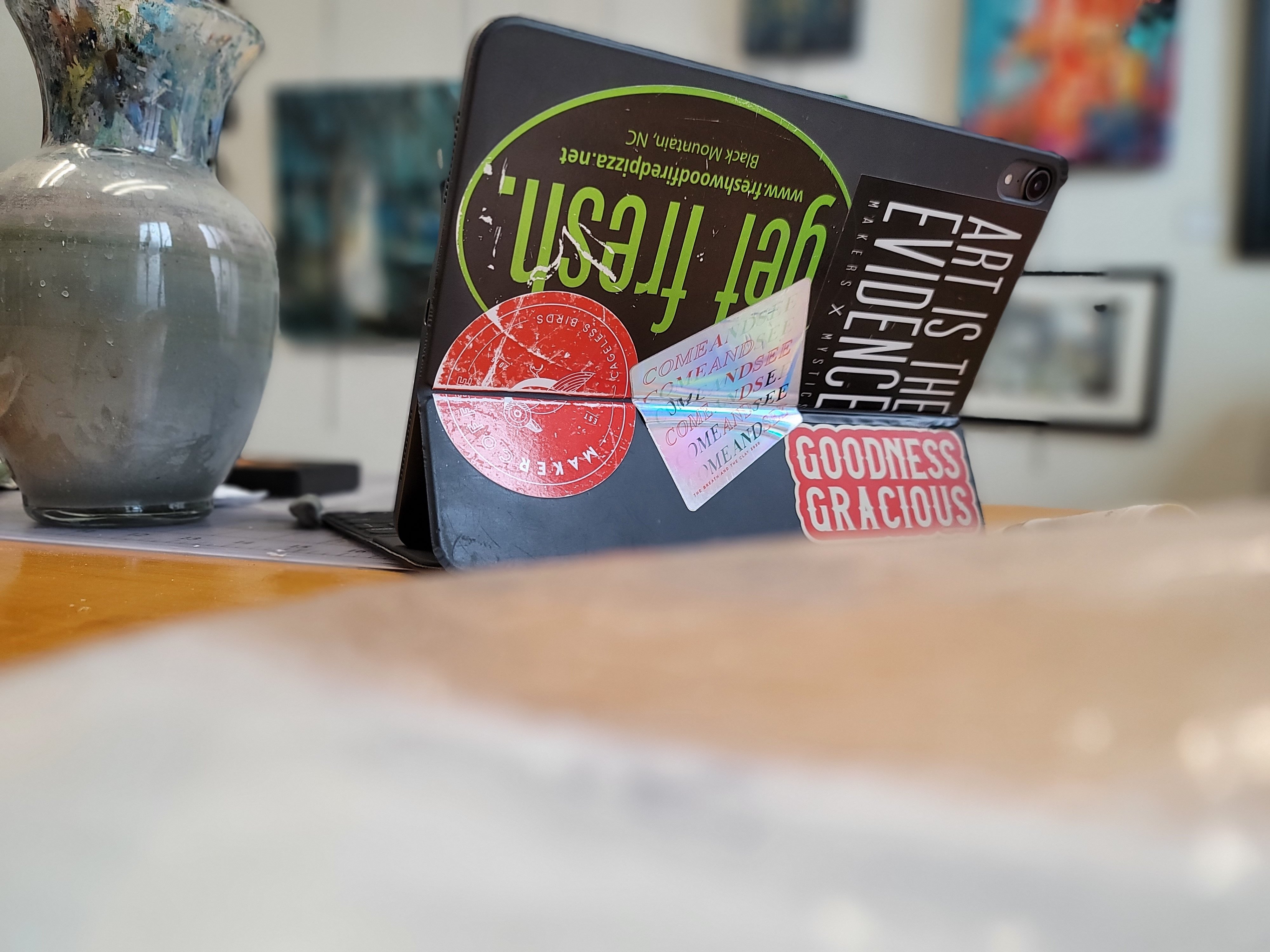Art of Hope galleries and framing shops in Wallace and Clinton, NC are evidence of an impossible dream that came true for artist, Hope G. Smith. In the art business for 18 years, Hope has over 1000 paintings, two Art of Hope galleries, and work on display around the world.

Hope grew up as an artist in a family of creatives and entrepreneurs. Though they have been helpful for her development as an artist and businesswoman, Hope was not encouraged to see art as a viable career early on. She pursued teaching for a more steady income but found herself writing her own business plan after just three years of teaching. In January 2004, she opened a studio out of her home and began the journey of entrepreneurship. “I taught private lessons, made my own art, and did custom framing,” Hope says. “I took on any job possible, and it just grew from there.” In the beginning, Hope went to shows, expos, and all sorts of events to get her work seen. She also kept expenses low by working from home. “Until you get on your feet,” she says, “working from home cuts the overhead.”
With no formal business training of her own, Hope surrounded herself with a strong support system.
You need to know who you can trust to surround you. It should be a partnership where you help each other out–not just one benefitting from the other.
Hope G. Smith on business partnerships
Hope’s most important partnership is with her husband. He did the hard work of researching the business side of what she needed to do to make her dreams come true.
Two really are better than one if you let it be, but you have to work at it. It isn’t easy; it’s hard work.
Hope G. Smith about marriage
Hope’s artistic style has been described as whimsical, colorful, and loose. She tries to capture “the soul of the moment, not a photo-realistic portrayal of it”. Her art also incorporates Bible verses as an intentional attempt to be a positive light. “If we can be a light in whatever work we find ourselves in (mine is art), we should be one!”
Prints from selected originals are available for purchase within Art of Hope galleries and online. Some originals can be purchased as well as custom framing jobs at either location. Hope is also available for hire to do custom commissions and live wedding painting.
Hope G. Smith is a founding member of the Downtown Wallace Merchant Association, and she is a strong advocate for the value of a healthy Chamber of Commerce.
The Chamber is what visitors look at when they come to a new area. When a Chamber is healthy, it goes to businesses and supports them, it sends customers to them, and it shops locally for its own needs before it looks elsewhere. Good leadership is a partnership with business, and we support each other.
Hope G. Smith on the importance of a Chamber of Commerce
The Downtown Merchant Association works with the Chamber of Commerce to support downtown businesses and bring activities there like the semi-annual Shop Hop in April. This ticketed event includes lunch, coffee, free merchandise, and discounts at 15-20 downtown shops in Wallace, NC. Downtown Wallace is a thriving place with businesses that have been in operation there for many years. When asked about why small-town America is thriving with culture today, Hope’s answer was sincere. “People are hungry for a small-town community. Covid has taught us all that we need each other; we need community.”
Hope doesn’t take for granted that she has been blessed to be in business as an artist for 18 years. “The art business isn’t easy. Sometimes you overwork and have to be willing to put in the hours that nobody sees. When you are doing what God has called you to do,” she says, “you are doing that thing that fills your soul. The money will follow after that. It is much harder to do something you don’t love, so pursue your passion and don’t feel guilty for doing something you love. We need to be able to embrace people for what they are, not necessarily the 9-5 boxes we want to put them in.”
A lot of people, over the years, have told Hope that they are not creative, but Hope looks at creativity much different. “Creativity breeds creativity,” she says. “People do it all the time and don’t realize it. Creativity is an important part of how we nurture humanity. It is when we aren’t nurturing others that problems arise in society.”
When she is not out painting in the community, Hope G. Smith can be found in one of her two galleries: Art of Hope in Wallace or Clinton, NC. She is also available online at hopegsmith.com.






















